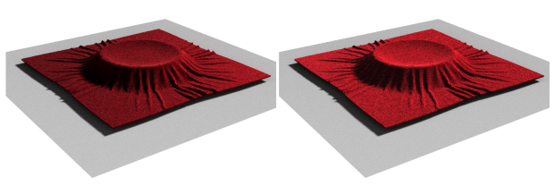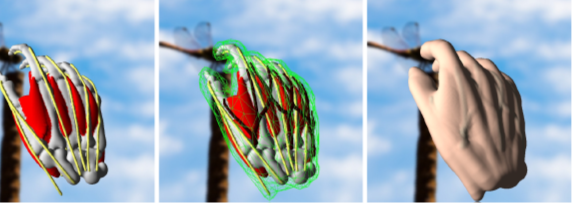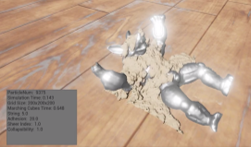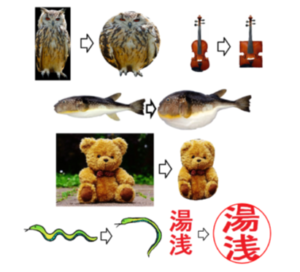Graphics Paradigms (GP) and Reality Modeling (RM) are closely related with each other. In fact, these two teams often discuss jointly. Both teams are studying how to describe CG, but their approaches are exact opposite.
RM aims to express specific objects. Therefore, their study begins from deciding targets to express. Then, through the analysis of the real world, the construction of the model, the use of the measured data, etc., the expression technique specialized for the object is sought.
On the other hand, GP studies drawing methods itself. To generate CG, it is very difficult to create a new one from scratch, and many existing technologies will be used. It can be said that RM research basically follows existing drawing methods, but GP is studying how to create images that differ from the conventional methods. Therefore, GP aims at general methods that do not depend on the type or the size of objects. This point is in contrast to RM.
However, the two do not oppose but develop while interacting with each other. Since the method studied in GP is general-purpose, it can be said that it is worth considering the application for studies of RM. Conversely, finding common points among some methods proposed by RM may lead to the discovery of a general method. Therefore, GP and RM are in a mutually beneficial relationship with each other through deduction and induction.
Also, as can be said for the whole field of informatics, we must study considering the performance of the computer in that era. With the increase in computational resources, it is often possible to easily realize things that were impossible some decades ago, so it is important to always understand what is required in that era. From this perspective as well, we can expect interactions such that GP reads the required drawing method from RM research, and RM learns how to effectively utilize computational resources from GP.









